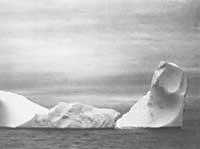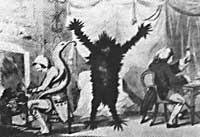Why are we cold?
1986/02/01 Agirre, Jabier - Medikua eta OEEko kidea Iturria: Elhuyar aldizkaria
Cold is not a temperature problem, not even winter. The differences between one person and another are very great, while one quickly highlights the cold, another never feels cold. What are the best recommendations and preventive measures on cold?
To begin with, we will say that the human being is a homeoteric animal, that is, of warm blood. Contrary to what happens with cold-blooded animals, which would freeze at very cold temperatures, humans constantly carry their own environmental heat: the temperature of our body, under normal conditions, remains between 36.5 and 37º. On the other hand, human skin is protected against heat loss by layers of fat.

The difference in body and outdoor temperature limits the circulation of heat and cold. When it is cold outside, the body loses heat and the colder it is outside, the greater the heat loss. To avoid this heat loss, the body must produce more heat: man intensifies his internal loss by adding the necessary fuel. That's why we consume more fat in winter and that's why our meals should be more abundant this time of year.
If we look at other animals we will see curious things. For example, the elephant, used to living in tropical temperatures, cannot sweat. Since Greenland dogs are protected by a layer of compact and rough hairs, they are able to keep their internal temperature constant and resist without any difficulty climatic situations up to zero degrees of larogeites.
If we return to human beings, we also find great differences here. Civilizations appeared in temperate lands (Mediterranean, Middle East). As the population grew, humans were forced to migrate: First to the north and later to the south. Thus, in thousands of years, the human species has become accustomed to colder temperatures. However, today we are at ease about 30º.
However, these general notes or standards are not applicable to all human beings. Some Soviet scientists were surprised when they investigated a tribe from Siberia, at bedtime, when they saw that these yakotas were stripped completely and slept with a single leather cap. The same has been seen in the South American extreme with people living in Tierra del Fuego.
At the mouth of the San Lorentzo River in Canada, fishermen slaughter by winged hand. The circulation of their fingers is adapted to these harsh conditions: a large extension occurs in the fingers and thus they are not frozen.
Contrary to what we might think, the Eskimos who inhabit the Arctic area do not have a special physiological reaction against the cold. Things clarify their special behaviors: their diet is very rich in fats (especially walrus meat) and they dress properly, with their skin garments a layer or layer of hot air is created between clothing and skin.
When it is cold, humans give almost all their food in the production of heat of life: although there are experiences that show that temperature can be pleasant, more than half of the food we eat, we provide it to keep our temperature at that level (36.5 - 37 degrees).
On the other hand, when it is cold, our body takes other protective measures: the epidermis that forms the thin outer layer of the skin contracts; blood vessels are compressed to prevent heat loss; the sebaceous glands stand out slightly for the appearance of what is known as "rooster bark". Contraction of blood vessels increases body temperature for a few seconds. After a season of contact with the cold, the body begins to vibrate. These chills also raise the internal temperature. Moving your muscles produces intense heat that cannot be stored and quickly lost through the skin.

Gai honi buruzko eduki gehiago
Elhuyarrek garatutako teknologia





